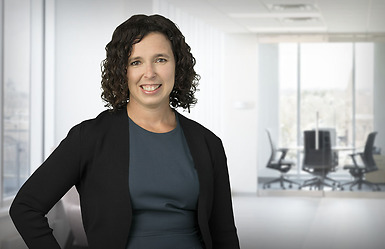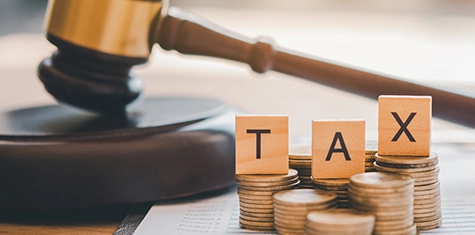On November 13, 2020, the Minnesota Department of Revenue updated its website guidance regarding the Minnesota Qualified Data Centers sales and use tax exemption. The revision recognizes two things that taxpayers and practitioners have argued for years. First, the new guidance acknowledges that certain “distributed” software (i.e., software that is loaded at the data center and then distributed or pushed out to devices outside the data center) should qualify for the data center sales and use tax exemption. And second, the guidance concedes that in evaluating whether software or hardware was purchased for use in the data center, that the Department should consider evidence other than just the “ship-to” address on an invoice.
Qualified Data Center Exemption History
In 2011, the Minnesota Legislature enacted a statutory incentive for companies to invest in data centers in Minnesota, expanding the scope and applicability of the exemption in 2013. Companies that constructed new data centers (investing at least $30 million within a 48-month period) or refurbished data centers (investing at least $50 million within a 24‑month period) in Minnesota could get their data centers certified by the Department of Employment and Economic Development (DEED) as “qualified” or “qualified refurbished” data centers. In exchange for investing in Minnesota data centers, the Legislature provided that the companies’ “purchases of enterprise information technology equipment and computer software for use in the qualified data center” would be exempt from sales and use tax. A company making qualifying purchases under the exemption must first pay the tax and then seek a refund.
Relying on the incentive, companies invested in qualified data centers and filed refund claims with the Minnesota Department of Revenue, seeking sales and use tax refunds for hardware and software purchased for use in the qualified data centers. However, the Department of Revenue interpreted the data center sales and use tax exemption narrowly and denied many refund claims.
Department of Revenue’s Prior Guidance
There were two primary bases for the Department of Revenue’s denial of taxpayers’ data center sales and use tax refund claims.
First, the Department of Revenue believed that only “software” that is “installed and remains” on servers at the data center qualifies for the data center exemption. The Department’s former website guidance provided that to qualify for the data center exemption, the software must either (a) operate, maintain, or monitor data center equipment; or (b) manage, manipulate, analyze, collect, store, process, distribute, or allow access to “large amount of data.” The Department categorically denied that software loaded at the data center and then “distributed” or pushed out to devices outside the data center was purchased “for use” in the data center (e.g., human resource management software installed on devices at company headquarters, word processing software licenses deployed to devices outside the data center, etc.).
Second, the Department denied many taxpayers’ sales and use tax refund claims on the basis that invoices created through collaboration software (e.g., Ariba) were insufficient for substantiation purposes and that the “ship to” address on software or hardware invoices did not reflect the data center address.
Department of Revenue Agrees that Certain Distributed Software Qualifies for Exemption
On November 13, 2020, the Department revised its guidance to reflect a significant change in its position regarding distributed software. Under the new guidance, rather than requiring “software” to be “installed and remain” on servers at the data center, the Department’s website now provides that either the “original software license” or “original software” must be “loaded” at the data center and “remain” on the servers at the data centers. Although the distinction between “installed” and “loaded” is subtle, the change reveals a critical shift in the Department’s understanding of distributed software.
The guidance also added the following additional types of software as qualifying for the data center exemption:
- Software accessed through the data center servers, including remote access.
- Software that generates data that is stored on the data center servers and is accessible from outside the data center.
- Software that has its licensing centralized at the data center, with remote access to the data center servers for license verification.
Conversely, the Department clarified that the following software does not qualify for the data center exemption: “Software that is loaded at the data center but neither the original license nor the original software remains at the data center.”
Consistent with its change in position, the revised guidance no longer excludes “software that is loaded at the data center for distribution or deployment (pushed out) to devices outside the data center” from qualifying software.
Accordingly, the Department of Revenue has finally agreed that software loaded at the data center and then distributed to “end users” throughout the enterprise may, under certain circumstances, qualify for the data center sales and use tax exemption.
Substantiating Location of Software and Hardware
The revised guidance also clarified the types of documentation the Department will accept to prove that software or hardware was purchased for use in the data centers. As before, the guidance continues to provide that such documentation may include:
- Installation invoices
- Invoices with ship-to, delivery addresses or installation location information
- Software license agreements
However, the revised guidance added the following note: “This list is not all-inclusive, and we may require a combination of records. The records provided must be relevant, reliable and consistent.”
The new guidance, therefore, recognizes that even if the ship-to address on an invoice does not match the data center address, taxpayers may provide additional documentation or information to establish that the software or hardware was in fact purchased for use in the data center.
Conclusion
The Department’s new revised guidance is a step in the right direction. Please contact us if you need assistance with qualifying your facility for Minnesota’s data center incentive program, preparing and automating future data center refund claims or with appealing any denials of such claims.


